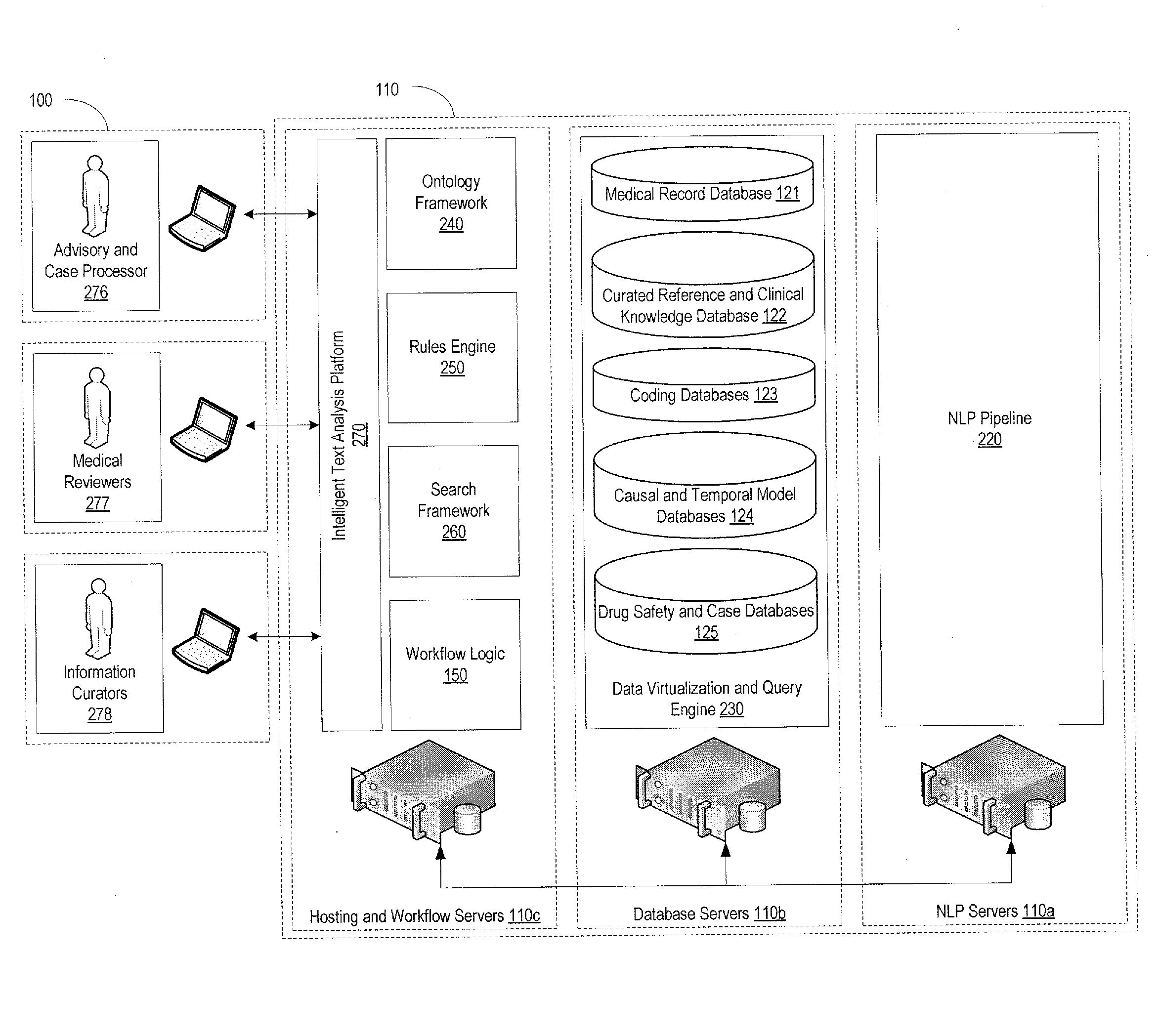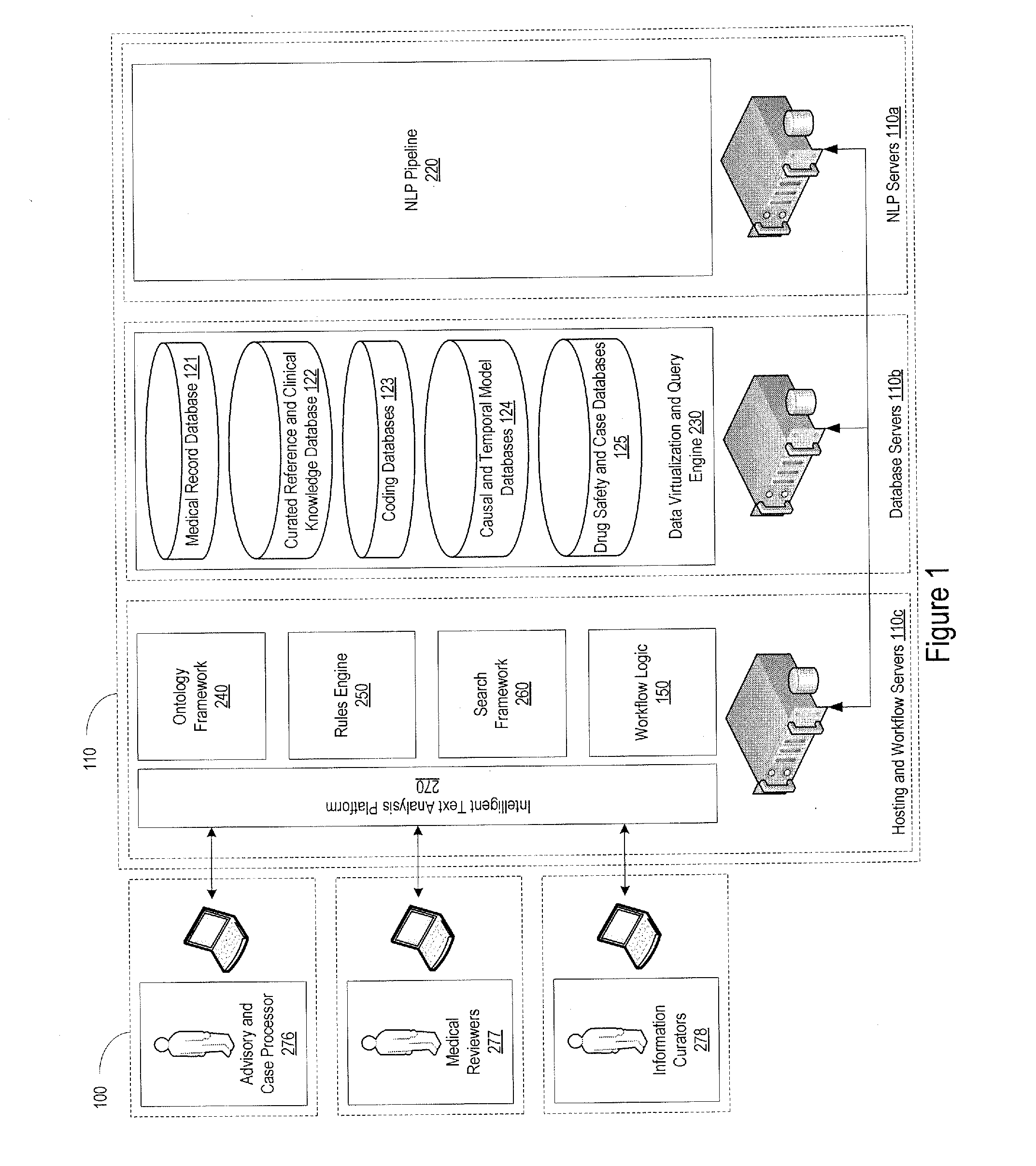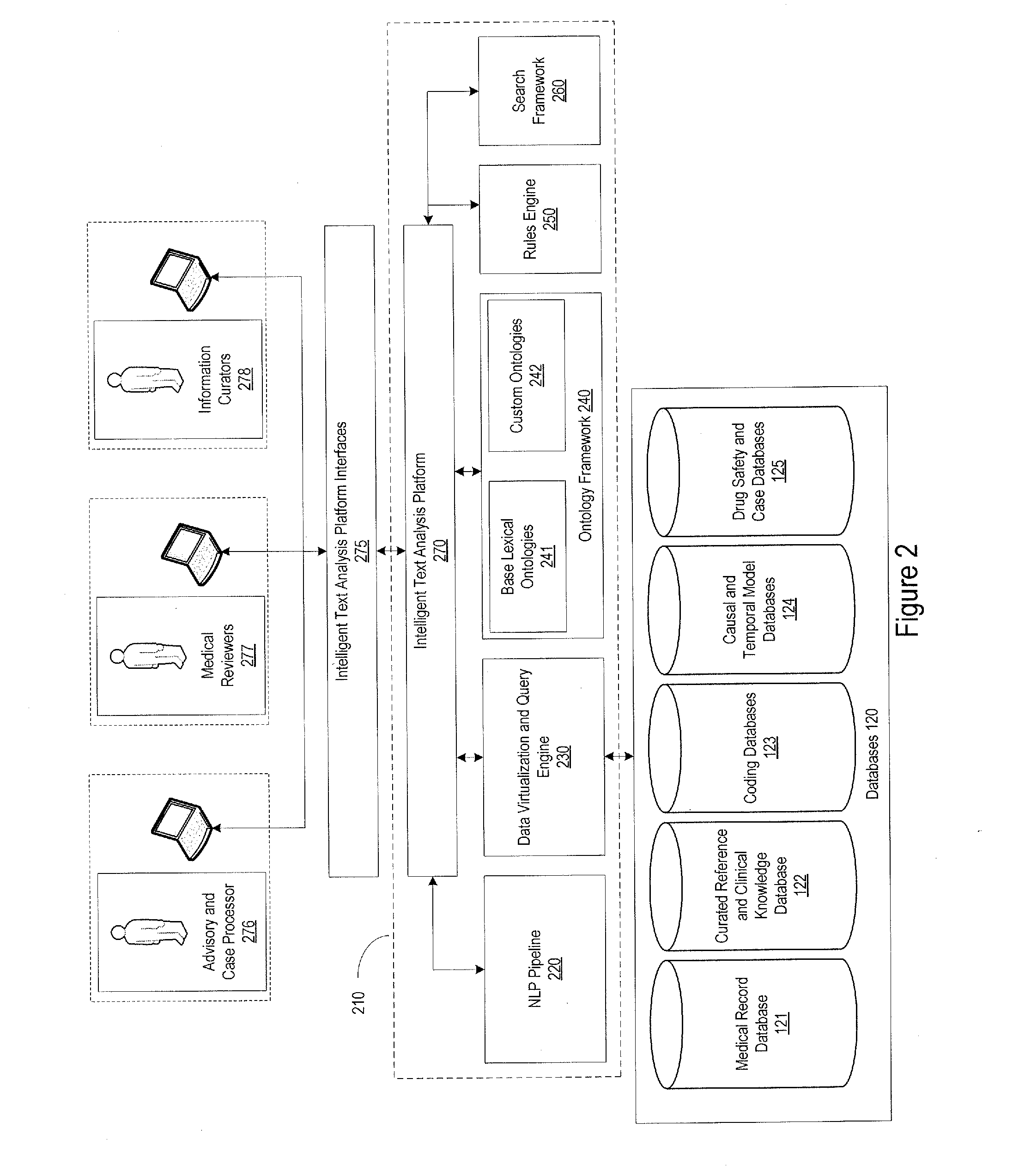System for automated analysis of clinical text for pharmacovigilance
a clinical text and automated analysis technology, applied in the field of automated analysis of clinical text for pharmacovigilance, can solve the problems of time-consuming process requiring medical professionals, adverse effects of drugs may not be detected too late, important safety signals may not be fully identified and evaluated, etc., to achieve accurate and complete capture of relationships
- Summary
- Abstract
- Description
- Claims
- Application Information
AI Technical Summary
Benefits of technology
Problems solved by technology
Method used
Image
Examples
Embodiment Construction
[0030]The pharmacovigilance system described herein may also utilize aspects and features described in Indian patent application Ser. No. 1390 / CHE / 2014, filed Mar. 17, 2014, entitled SEMANTIC MODELING OF TEXTUAL REQUIREMENTS FOR AUTOMATED ANALYSIS AND ENGINEERING, which is commonly assigned and incorporated herein by reference in its entirety.
[0031]FIG. 1 provides an example of the system environment in which the pharmacovigilance system may operate. The pharmacovigilance system 100 may include one or more servers 110, which may individually or collectively implement different functionality of the system. As an example, one set of servers 110a may be responsible for performing natural language processing functions, described in greater detail below, while another set of servers, for example, database servers 110b, may be responsible for handling the database interactions. The database servers 110b may interface with one or more databases 120, and may be responsible for maintaining a...
PUM
 Login to View More
Login to View More Abstract
Description
Claims
Application Information
 Login to View More
Login to View More - R&D
- Intellectual Property
- Life Sciences
- Materials
- Tech Scout
- Unparalleled Data Quality
- Higher Quality Content
- 60% Fewer Hallucinations
Browse by: Latest US Patents, China's latest patents, Technical Efficacy Thesaurus, Application Domain, Technology Topic, Popular Technical Reports.
© 2025 PatSnap. All rights reserved.Legal|Privacy policy|Modern Slavery Act Transparency Statement|Sitemap|About US| Contact US: help@patsnap.com



